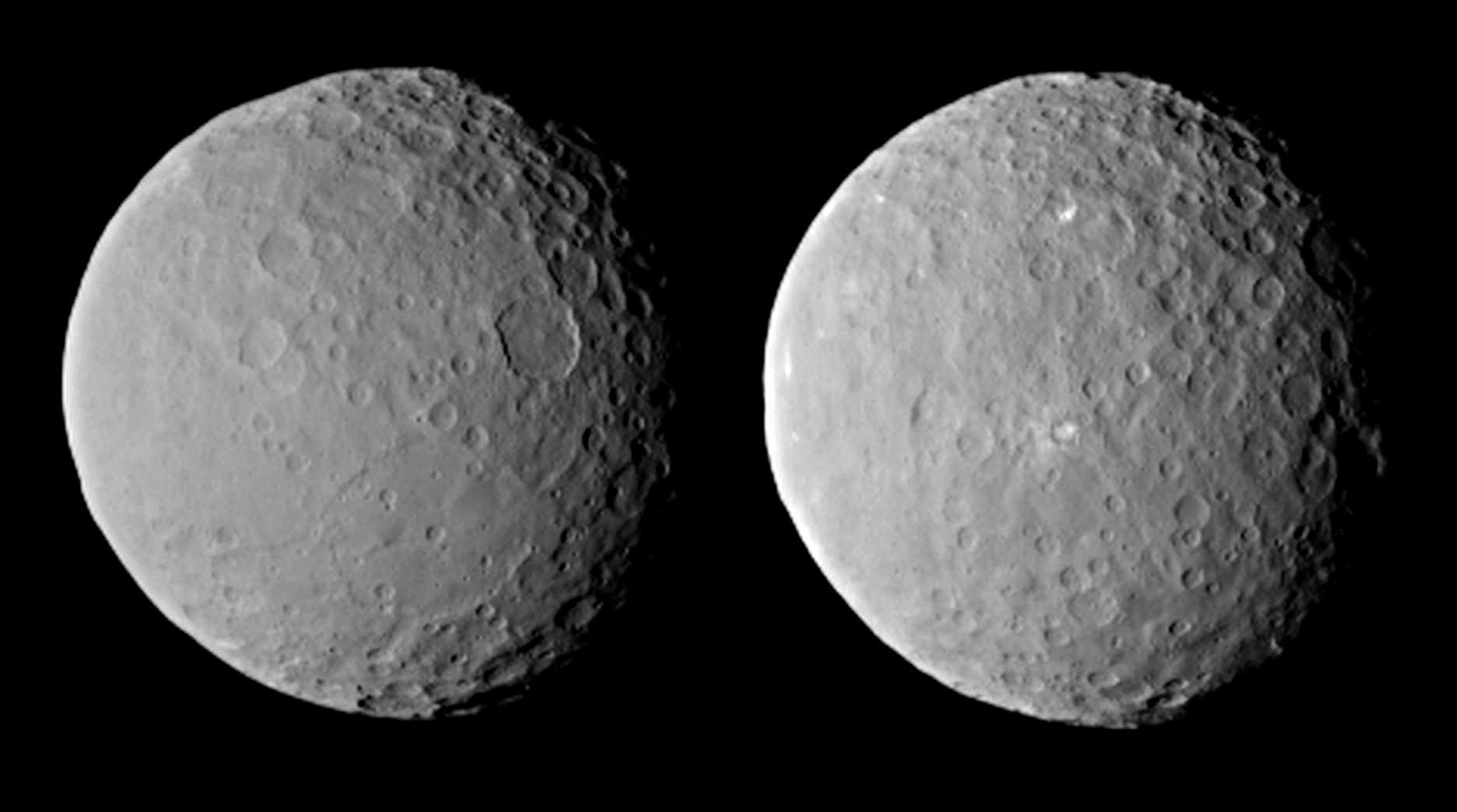See Live Views of Dwarf Planet Ceres Friday in Slooh Observatory Webcast

Update for March 6 at 10:09 a.m. EST: NASA's Dawn probe successfully entered orbit around the dwarf planet Ceres today at 7:39 a.m. EST (1339 GMT). Read the full story here - NASA Dawn Probe Enters Orbit Around Dwarf Planet Ceres, a Historic First
An observatory will celebrate the planned arrival of a NASA spacecraft at Ceres by streaming live images of the dwarf planet live online Friday (March 6).
NASA's Dawn mission is expected to arrive at Ceres — the largest object in the main asteroid belt between Mars and Jupiter — Friday. In honor of the historic arrival, the online Slooh Community Observatory will host a 45 minute webcast featuring live views of Ceres starting at 1 p.m. EST (1800 GMT) at its website: http://main.slooh.com/.
You can also watch the Ceres webcast on Space.com, courtesy of Slooh.
Dawn's arrival at Ceres will be the first time a human-made spacecraft has been so close to the cosmic body.
"Few astronomical events are as exciting as seeing a world up-close for the very first time; with Dawn’s imminent arrival at Ceres that’s exactly what we’ve got to look forward to over the coming days, weeks and months," Slooh host Will Gater said in a statement. "The mission should tell us a great deal about the history and composition of this enigmatic dwarf planet. And, as we’ve seen with those mysterious bright ‘spots’, there will always be thrilling surprises to investigate along the way. I can’t wait to see what Dawn will show us!"
The free Slooh webcast will show live shots of Ceres from Australia. The dwarf planet should look like "a bright dot traveling against a background of stars," Slooh representative Eric Edelman told Space.com via email.
Get the Space.com Newsletter
Breaking space news, the latest updates on rocket launches, skywatching events and more!
Interested skywatchers in the Southern Hemisphere might be able to spot Ceres in the constellation Sagittarius now, but the dwarf planet is not bright enough to see with the naked eye, according to Slooh.
"Ceres is currently lost low-down in the predawn light for those of us in northern Europe and the northern U.S. states. However the view gets better the further south you go. It’s relatively high in the sky in the hour before dawn from Sydney, in Australia, for example. At around 9th magnitude you’ll need a small telescope to see it well. It’s currently in the constellation Sagittarius, roughly 7 degrees east-and-slightly-north of the handle of the famous ‘Teapot’ asterism."
NASA's Dawn mission launched to space in 2007. The spacecraft visited Vesta — the second-largest asteroid belt object — before moving on to Ceres. Scientists are expecting Dawn to beam back amazing, never-before-seen images of Ceres during its time orbiting the dwarf planet.
Follow Miriam Kramer @mirikramer. Follow us @Spacedotcom, Facebook and Google+. Original article on Space.com.
Join our Space Forums to keep talking space on the latest missions, night sky and more! And if you have a news tip, correction or comment, let us know at: community@space.com.

Miriam Kramer joined Space.com as a Staff Writer in December 2012. Since then, she has floated in weightlessness on a zero-gravity flight, felt the pull of 4-Gs in a trainer aircraft and watched rockets soar into space from Florida and Virginia. She also served as Space.com's lead space entertainment reporter, and enjoys all aspects of space news, astronomy and commercial spaceflight. Miriam has also presented space stories during live interviews with Fox News and other TV and radio outlets. She originally hails from Knoxville, Tennessee where she and her family would take trips to dark spots on the outskirts of town to watch meteor showers every year. She loves to travel and one day hopes to see the northern lights in person. Miriam is currently a space reporter with Axios, writing the Axios Space newsletter. You can follow Miriam on Twitter.









